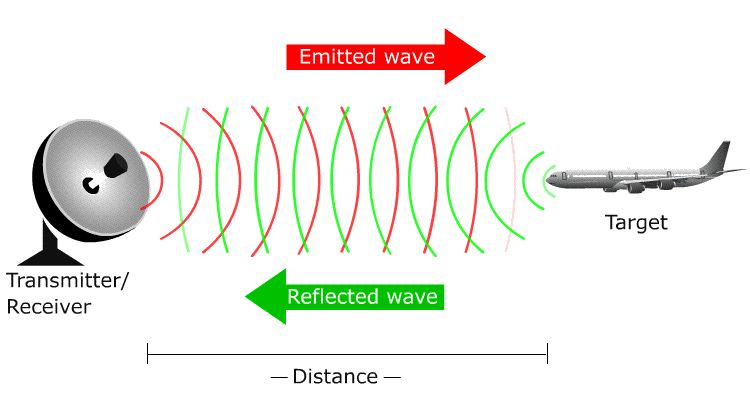The principle of a radar system consists of emitting a wave and receiving the reflected wave that was reflected by an object (target).
Although some aspects of radar technology are very complex, involving higher mathematics, the basics of how radar works is fairly straightforward. A radar system has a transmitter that sends out radio waves called radar signals in a direction determined by the radio operator. These radar signals (electromagnetic waves) bounce back to a transmitter for interpretation.
As seen in the image above, the basic concept is sending out radio waves from a transmitter/sender over a "Distance", allowing them to hit an object, having the reflected wave (shown in green) travel back over the same "Distance"- back to the receiver.
It is a pretty simple concept. Using high school mathematics, one can measure the time it takes for the wave to travel from the transmitter to the object and back.
You make use of the known radio wave speed – determining the object’s distance.





